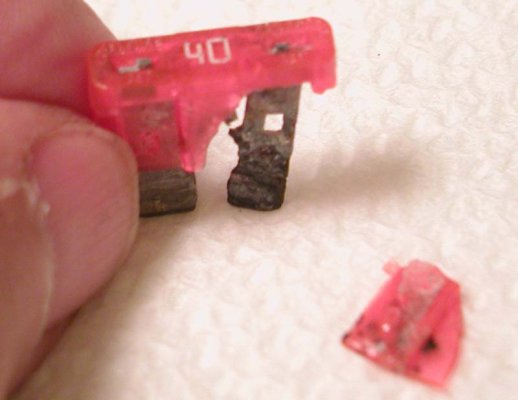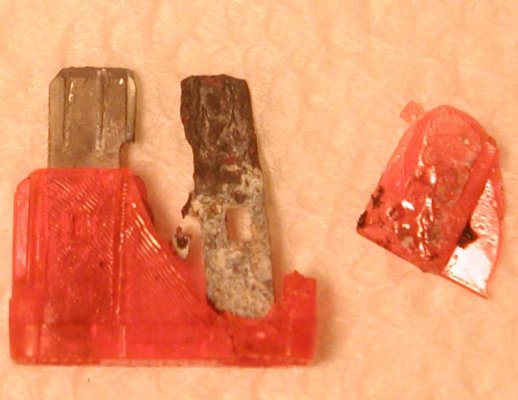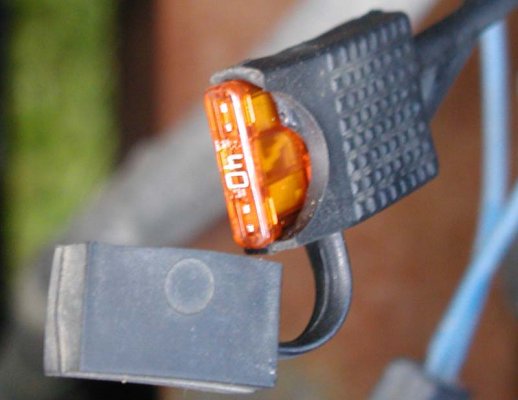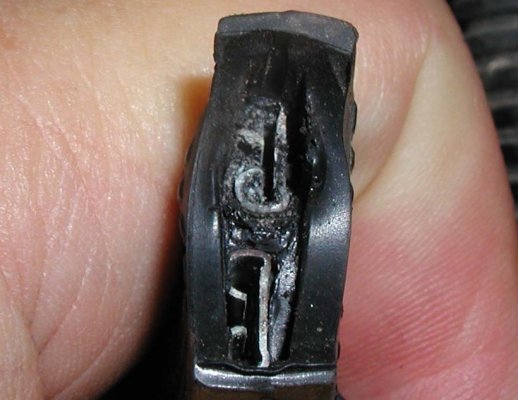rsalhus
Well-known member
- Joined
- Jul 20, 2006
- Posts
- 1,335
We had a problem with one of the fuses in the HWH 310 manual leveling system in our MH. While retracting the leveling jacks, the system just quit retracting the jacks, leaving two of them semi-retracted. We couldn't lower or retract the jacks from that point on and we couldn't pry them up. We suspected the fuses but didn't know exactly where they were. The HWH control panel was lighted and appeared to be working. We then followed the clicking noise when hitting the 'store' button and found the HWH control box in a floor cabinet near the front door. There were about 7 fuses on the back of that control box but they all checked out OK with my fuse tester.
Then we located a couple more individual fuses in the outside front of the motorhome, in where the generator and the HWH hydraulic cylinders are. One was a 15 Amp fuse and the other was a 40 Amp fuse. The 15 Amp fuse tested OK but the 40 Amp fuse tested bad so I attempted to pull it out with my fingers. When I pulled it out, it busted into several pieces as shown in the pictures below. I replaced the 40 Amp fuse with a 30 Amp fuse (that's the highest I had) and the jacks then retractred successfully. (We'll get a 40 Amp fuse before we use the jacks again.)
This brings me to my question. The metal legs in the bad 40 Amp fuse looked fatigued and thin (not necessarily melted) and I'm wondering if the heat caused that when it burned out or if it somehow wore out and was weakened from normal use and 'weathering'. Do 12V fuses go bad? Do they wear out over time? They were covered with the rubber or plastic fuse holders but I imagine being exposed somewhat to the open air there, moisture could still get in as I don't think they make an airtight or a real tight connection. Any ideas or opinions?
Then we located a couple more individual fuses in the outside front of the motorhome, in where the generator and the HWH hydraulic cylinders are. One was a 15 Amp fuse and the other was a 40 Amp fuse. The 15 Amp fuse tested OK but the 40 Amp fuse tested bad so I attempted to pull it out with my fingers. When I pulled it out, it busted into several pieces as shown in the pictures below. I replaced the 40 Amp fuse with a 30 Amp fuse (that's the highest I had) and the jacks then retractred successfully. (We'll get a 40 Amp fuse before we use the jacks again.)
This brings me to my question. The metal legs in the bad 40 Amp fuse looked fatigued and thin (not necessarily melted) and I'm wondering if the heat caused that when it burned out or if it somehow wore out and was weakened from normal use and 'weathering'. Do 12V fuses go bad? Do they wear out over time? They were covered with the rubber or plastic fuse holders but I imagine being exposed somewhat to the open air there, moisture could still get in as I don't think they make an airtight or a real tight connection. Any ideas or opinions?




